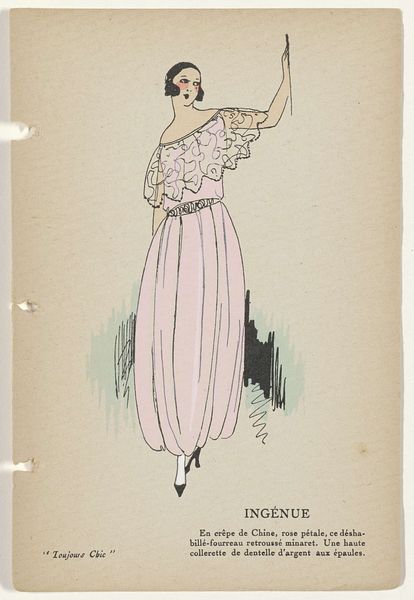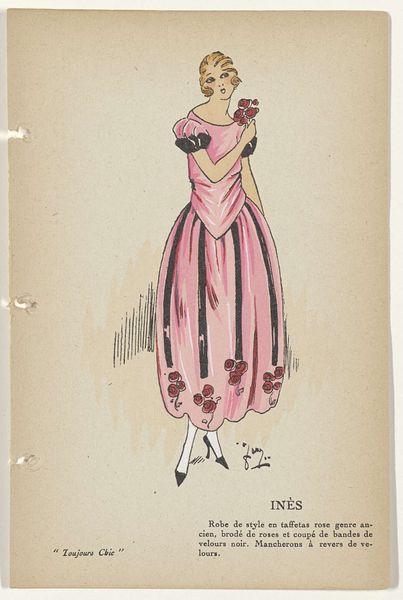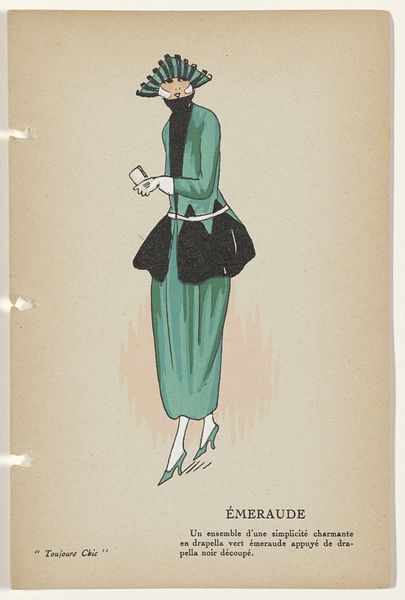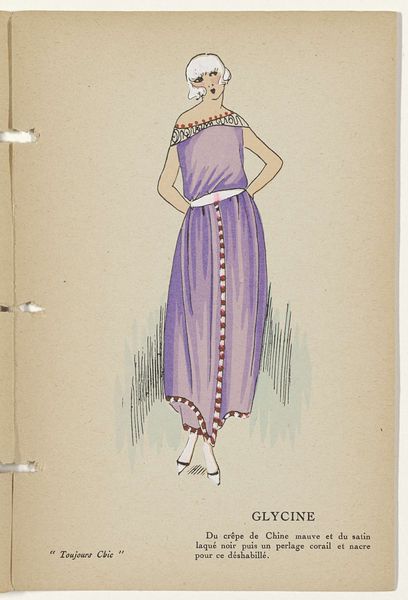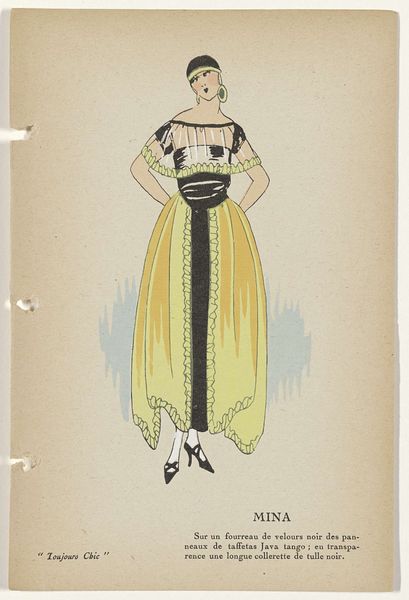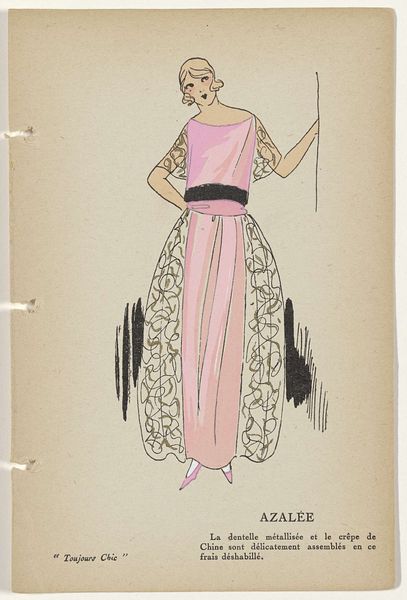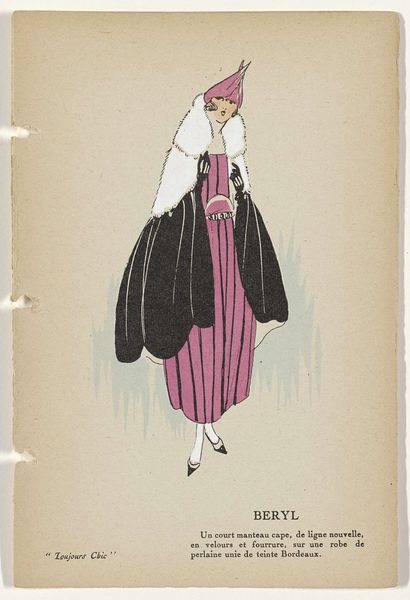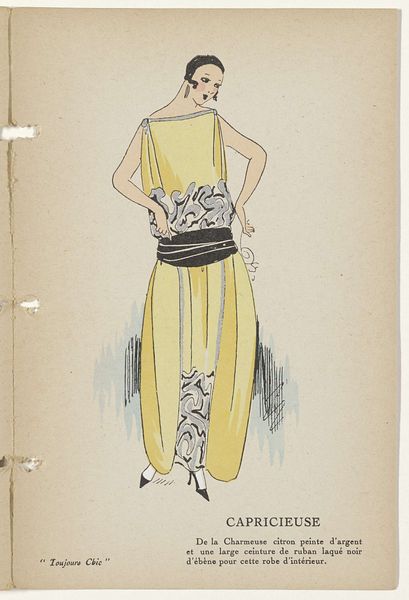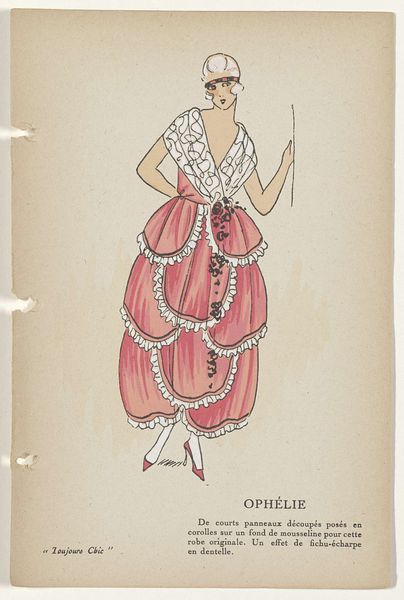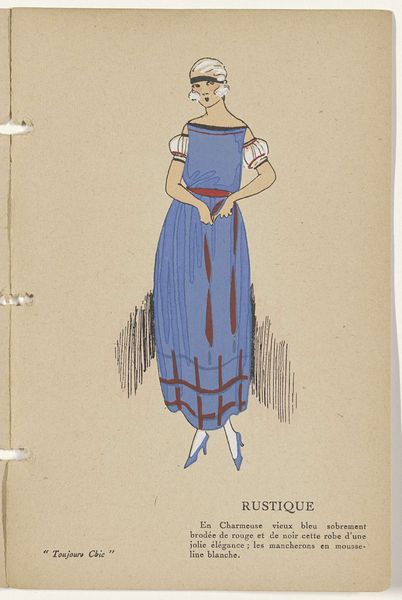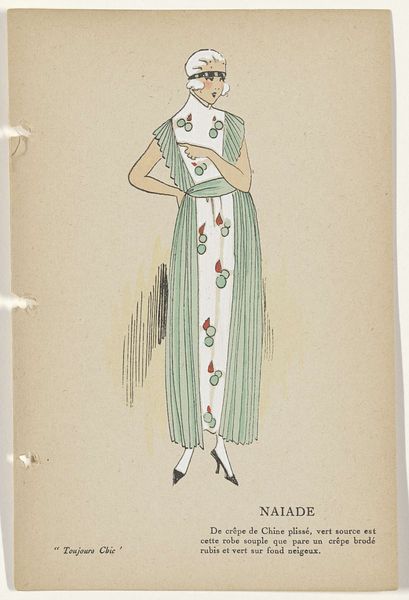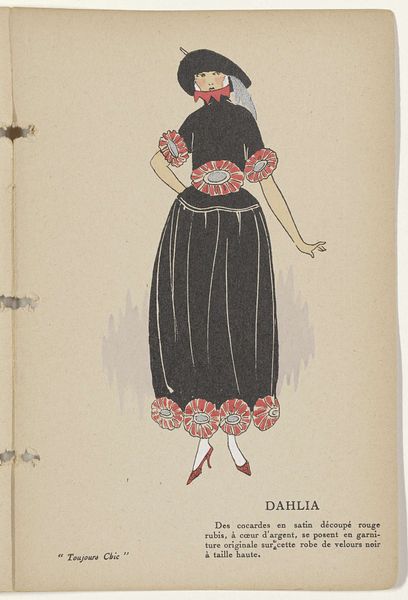
Toujours Chic, Toilettes de Soirées, Hiver 1921-1922: Javotte 1921 - 1922
0:00
0:00
Dimensions: height 180 mm, width 120 mm
Copyright: Rijks Museum: Open Domain
Curator: The work we're looking at is titled "Toujours Chic, Toilettes de Soirées, Hiver 1921-1922: Javotte," a piece made between 1921 and 1922 by G-P. Joumard. It’s currently housed at the Rijksmuseum and presented in watercolor, ink, and drawing on paper. Editor: Immediately striking is the dress rendered in delicate pink. It reminds me of a faded photograph, carrying echoes of an era marked by both hope and economic struggle. The sketch lines suggest a fleeting moment, as if capturing an elusive elegance. Curator: Exactly. The image exudes the intimism so present during that time, depicting the fashionable clothing during that era. Think about it: after World War I, there was a societal push toward more liberation which materialized even in fashion. This, to me, suggests the portrait represents more than the style: she represents new values and aesthetics. Editor: I find the economy of means in this work fascinating. You see, with just a few strokes of ink and delicate washes of watercolor, Joumard conveys the texture of the fabric and the overall design. The visible pencil lines are important here. It highlights the handmade quality inherent in the production of clothing designs for an emerging consumer culture, and even reflects how luxury items were advertised and sold. Curator: Very true. And, historically speaking, that "handmade" quality contrasted against the rising tide of industrialization represents a tension between tradition and modernity that's so crucial for interpreting the period. I think the attention to historical fashion helps. She appears confident holding up what might be a mirror and appraising her appearance in the present. Editor: What do you make of the medium of paper being used? Considering its fragility, it suggests ephemerality; paper doesn't last forever! It speaks to me about the constant pursuit of novelty in fashion – a continuous cycle of creation, consumption, and obsolescence. Curator: Ultimately, it’s an intimate portrait, which captures a brief, elegant moment that speaks volumes about social, economic, and cultural changes in post-war Europe, as it is depicted through fashion. Editor: Indeed, looking closely, we gain insights not just into dressmaking and design but the world in which the work was created.
Comments
No comments
Be the first to comment and join the conversation on the ultimate creative platform.
